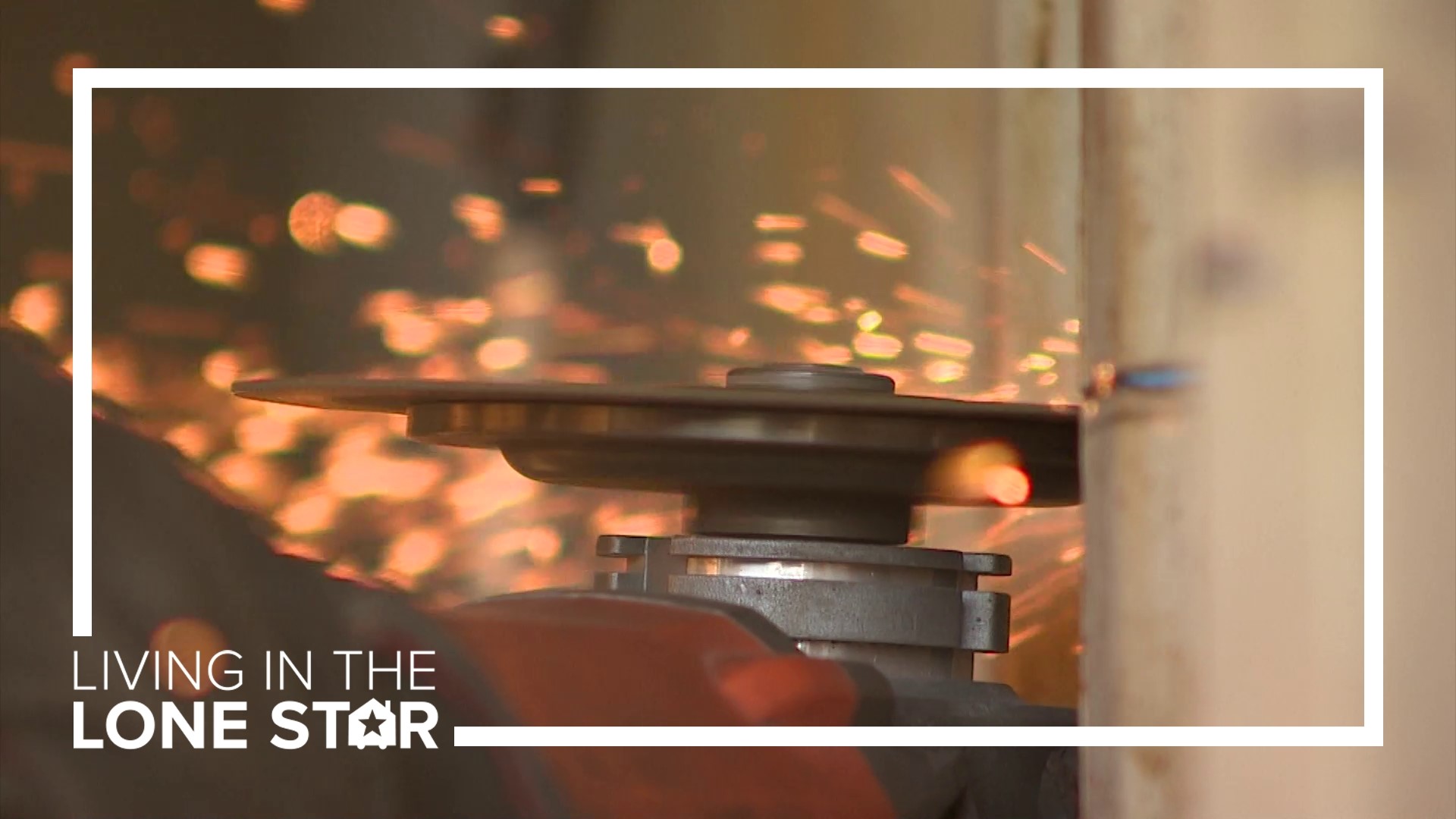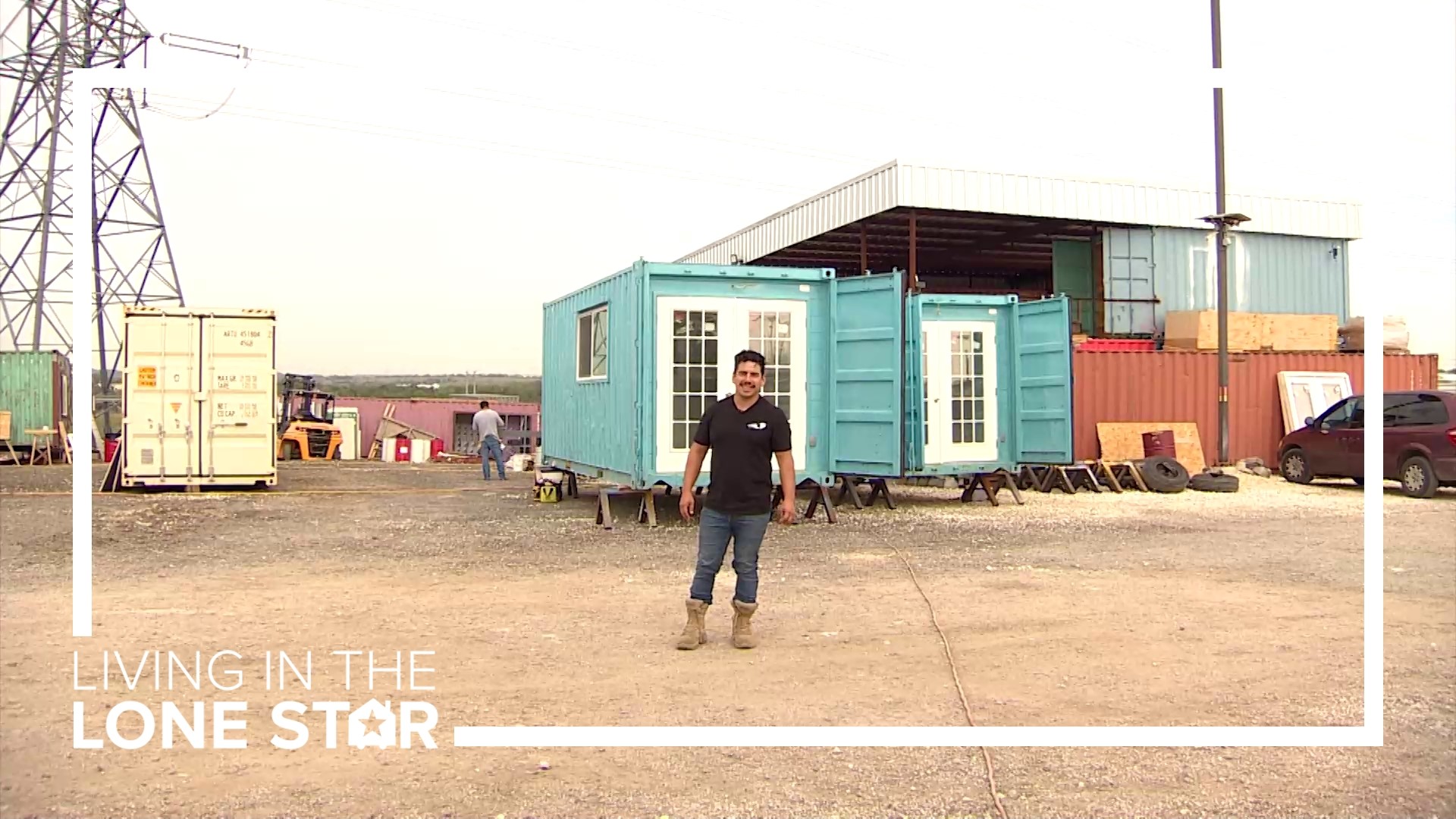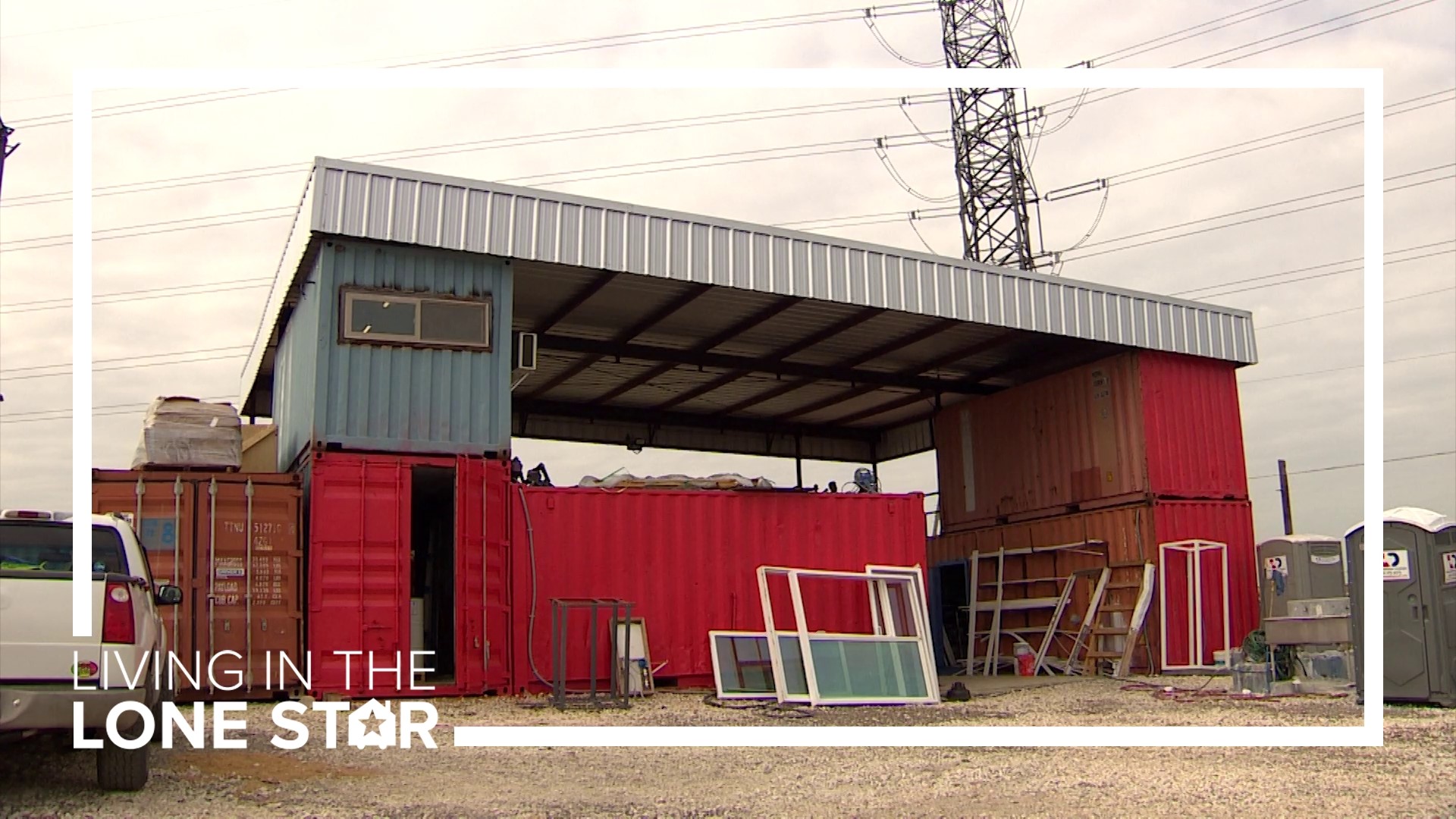Turning shipping containers into homes
Between its Austin and Houston yards, the Bob’s Containers crew is usually working on a couple dozen projects.

The Austin yard of Bob's Containers echoes with the typical sounds of home construction: drilling, hammering, sawing and more.
"Except our medium is a metal box," says co-owner Robert Balderas.
Shipping containers, specifically. Some are 20-feet long, others are 40 and on a given day, the crew at Bob’s is working on up to two dozen different projects between its yards in Austin and Houston.
'That's so gratifying' Turning a cold metal box into a cozy home
New boxes are sanded to remove rust, then cleaned before the first cut is made.
"It starts there," Balderas explains.
"It" is the process of turning a metal container into someone’s home.
Spaces for windows and doors come out first.
"Then it’s just really standard construction after that," Balderas says. "We wood-frame them. We’ll go in there and insulate them. Run the plumbing, run the electrical to international residential building code. And start the finish work."
He makes the process sound easy, but the transformation is stunning.
"It’s a great feeling to do this conversion," says Balderas. "It was a cold, metal box and we turned it into someone’s dream home. That’s so gratifying."
It happens quickly too. About two weeks for the smaller containers, a month for the large ones.
"Compared to building a [traditional] home, which can be six months to a year, you’ve got permitting and onsite construction costs, we have the ability to drop these, ready to live in, plug-and-play a lot faster at a very good price point as well," Balderas says.
From DIY to drag-and-drop Breaking down the cost of shipping container homes
One of the big selling points of building a shipping container home is the cost, but like anything, your choices can add or subtract from the price tag.
Let’s start with the basics: size. A used 20-foot shipping container averages about $3,500 and you’re looking at about $5,000 for a used 40-foot box. If you want a new one, it’ll be more.
But that’s just the rawest of raw materials. To live in it, you’ll need to cut out doors and windows, weld in reinforcements, insulate it, install the wood framing and put up walls. Then there’s all the finishing: wallpaper, countertops, appliances, the stuff that makes it a home.
Depending on your skill level with all that, you have some options: buy a DIY container, buy a pre-built container or design your own.
If you have the time and know-how, the DIY option is your cheapest bet. For example, at Bob’s Containers, you can get a 20-foot DIY container. Bob’s team handles the cutting, insulating, framing and wiring. You get to do the finishing touches. The cost here starts around $27,000.
"We do cater to those on a budget. If you look at our website and our offerings, we have a DIY menu," says Balderas. "A lot of people love that because they want to build these, they want to DIY and get the satisfaction of doing it themselves and they meet their budget requirements."
For those with a little more wiggle room in their budget (and maybe a little less handyman ability), Bob’s can deliver plug-and-play container homes. The only thing you have to do here is find a place to put it and move in.
"We give you photos throughout the whole process. You see the box when it comes in. You see the transformation. You feel like you’re there," Balderas says. "You get that nice final product and you can feel like, ‘This was a cold metal box, but now it’s my home. It has a huge, warm feel to it.’"
These range in price depending on size, design and finish, but you’re looking at everything from the $30,000 El Paso model to the $55,000 Dogwood model up to the Marble Falls model, a two-story home that starts at $89,550.
If you don’t see something you like in the stock options, there’s always the custom design option. There are too many variables to really lay out the price, but a general rule is that the wider you go (as in laying containers side by side instead of stacking them), you’ll pay more per square foot.
"With modular construction you can expand," says Balderas. "You can start with a 20-footer, then combine it with a 40-footer. You can stack a 20- on a 40-footer to give you a staircase and a second-story view."
The most cost-effective shapes are Ls or Us.
"It’s kind of like LEGOs," Balderas laughs. "You can do all sorts of things with them and reconfigure them. That’s one of the benefits of using shipping containers."
Stronger, faster, cheaper Shipping containers offer options, durability
Shipping container homes are a good alternative for a lot of people, Balderas says, especially those looking for a tiny home or a rentable unit they can drop in their backyard.
"I think people really like the aesthetic. They like the durability," says Balderas.
Containers are built to weather all kinds of storms and can withstand winds up to 150 miles an hour.
"It’s very safe, it’s very secure and it’s ready to pick up and move, but it’s durable," Balderas says. "You don’t need to worry about things getting jostled around and breaking."
For all those reasons, containers have business uses too. The team at Bob’s can turn a box into an office, like the one they use, a lab, a barbershop, even bathrooms.
"It’s the containerization methodology," says Balderas. "Whatever you need, you can put it in a container and you have that mobility aspect to pick it up and move it."
Creative construction Shipping containers used for unique buildings worldwide
Beyond simple homes and offices, shipping containers are being used to create some pretty stunning buildings around the world. A quick search on Instagram will show you what’s out there, including an ultra-modern mountain cabin, a triple-decker urban oasis, an artsy industrial home and even apartments!
The next time you visit Round Top, book a stay at Flophouze, a shipping container motel, that even has a shipping container pool.
In Seoul, South Korea, the Common Ground shopping center is made entirely from shipping containers, as is at least one school in Malawi.
Balderas summarizes: "The possibilities are endless, right?"





